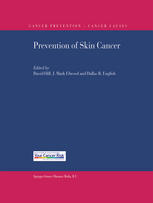

Most ebook files are in PDF format, so you can easily read them using various software such as Foxit Reader or directly on the Google Chrome browser.
Some ebook files are released by publishers in other formats such as .awz, .mobi, .epub, .fb2, etc. You may need to install specific software to read these formats on mobile/PC, such as Calibre.
Please read the tutorial at this link: https://ebookbell.com/faq
We offer FREE conversion to the popular formats you request; however, this may take some time. Therefore, right after payment, please email us, and we will try to provide the service as quickly as possible.
For some exceptional file formats or broken links (if any), please refrain from opening any disputes. Instead, email us first, and we will try to assist within a maximum of 6 hours.
EbookBell Team

5.0
50 reviewsOur series Cancer Prevention - Cancer Control continues to address the causes and prevention of cancer. In this volume, Hill, Elwood, and English bring together a rich resource summarizing the state of science underpinning the primary prevention of skin cancer. While skin cancer causes an increasing burden, particularly in populations of European origin, our understanding of the role of sun exposure together with the genetic components of skin cancer continues to grow. Given the emphasis on evidence-based medicine and public health prevention efforts, it is noteworthy that, although we can all access the same evidence base, countries around the world have had remarkably different responses to the application of this knowledge to prevent skin cancer. The outstanding contribution of the Australian public health community to the scientific understanding of skin cancer etiology and the translation of this knowledge into national prevention efforts uniquely positions the editors to compile this volume focused on the primary prevention of skin cancer. In so doing they draw on an international team of authors to present a “state of the science” summary of skin cancer prevention and to identify those areas where uncertainty remains. To achieve successful prevention of cancer we must translate our scientific knowledge base into effective prevention programs. This book offers the reader keen insights into the depth of our understanding of etiologic pathways for skin cancer. This etiologic science base is complemented by rigorous prevention science placing emphasis on the social context for effective and sustained prevention efforts.